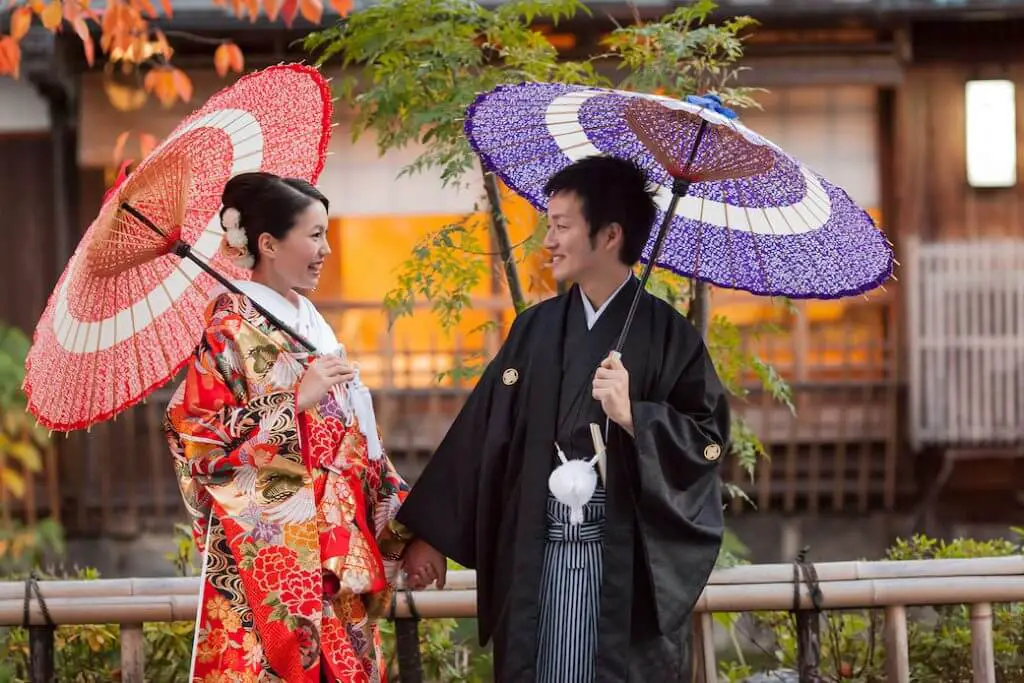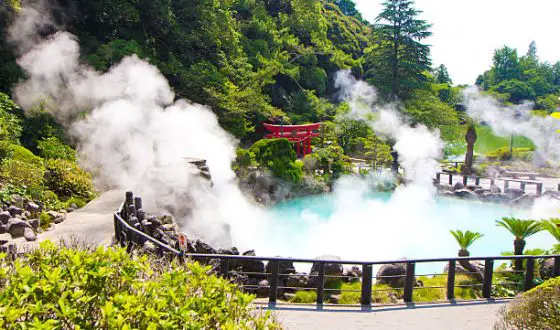10 Japanese Wedding Traditions You May Not Know
A wedding ceremony may be the most important event in every culture all over the world. The Japanese take this ceremony very seriously as the amount of money they spend on it can match a year’s salary. Nowadays, Japanese weddings combine a wide range of elements, from extremely traditional to modern adaptations as a result of the western cultural influence. However, a Japanese wedding itself still keeps some of its own unique traditions. In this blog, you’ll gain more knowledge of Japanese wedding traditions that you have never known about. Now, let’s check it out!
10 Japanese Wedding Traditions
1. Shinto Traditions
Shinto is an ancient Japanese religion that dominates the country’s ceremonial traditions, especially wedding ceremonies. A traditional Japanese wedding often takes place in Shinto temples, which feature religious iconography including stone dogs, water pavilions, and tall red gates that mark the division between the spiritual and corporeal worlds.
The ceremony is conducted by a Shinto priest and attended by only family members and very close friends of the bride and groom.
Watch the video below to see how a Japanese Shinto wedding ceremony is held
2. Wedding Costume
The Japanese wedding tradition is also unique in the outfits of the bride and groom. The clothing of the couple is elaborate and traditional in the Shinto style.
The bride and groom get dressed in elegant traditional styles. The bride wears white kimonos known as shiromuku and the groom puts on a black kimono with kimono pants and jacket.
In addition to kimono, the bride often wear a wataboshi, a white silk hood or headdress, over the bukin takashimada (bun) in her hair and this represents modesty and humility. Besides, she may also be made up in white make up, much like a geisha, to indicate her purity.
This is how Japanese wedding kimonos for the bride and groom are worn
3. Yui-no
Yui-no is the engagement ceremony that is a dinner and involves the meeting of the two families and the exchange of gifts.
The gifts are different items and each represents a positive hope for the marriage. For example, Shiraga (thread of hemp) represents the wish that couple will grow old together and a fan represents wealth and growth. However, the most common gifts are an obi for the bride (kimono sash) and a hakama for the groom.
4. San San Kudo
San san kudo is a sake sharing ceremony that is very common in Shinto Japanese weddings. During this Japanese wedding tradition, the bride and groom take three sips of sake from three stacked cups. After the bride and groom sip their sake, both sets of parents also sip the sake. The ritual is complete after a total of nine sips.
All of the sips have their own meanings. The first three (san) represents the three couples: the bride and groom, the bride’s parents, and the groom’s parents. The second three sips reperesent the three human flaws: hatred, passion, and ignorance and the last three sips represent freedom from those three flaws.
The phrase “san san kudo” literally means “three, three, nine times” and nine (ku) is a lucky number in Japanese culture.
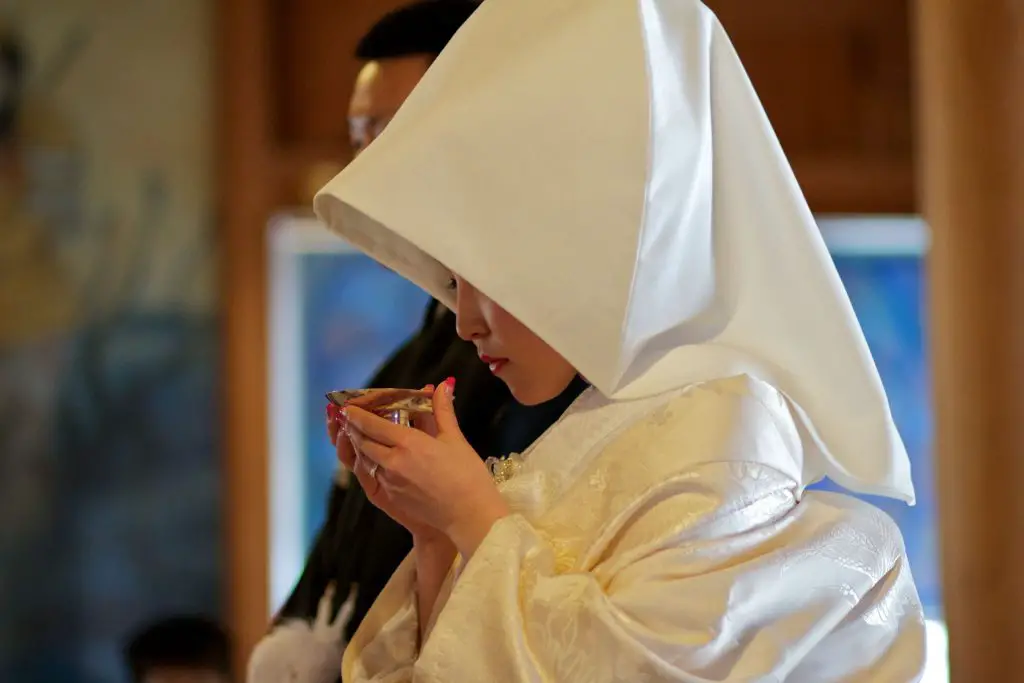
San san kudo is an indispensable part in every traditional Japanese wedding
SEE MORE:
5. Purification
Before the san san kudo, the couple is purified by the priest. This means that they are exorcised from evil spirits.
6. Shugi-bukuro
If you attend a Japanese wedding banquet, you are expected to bring a cash gift in an envelope called shugi-bukuro. You will write your name on the front of the envelope, then hand it to the person at the reception prior to signing the guestbook. Guests typically gift the newlyweds an average of 30,000 yen, which is about $350.
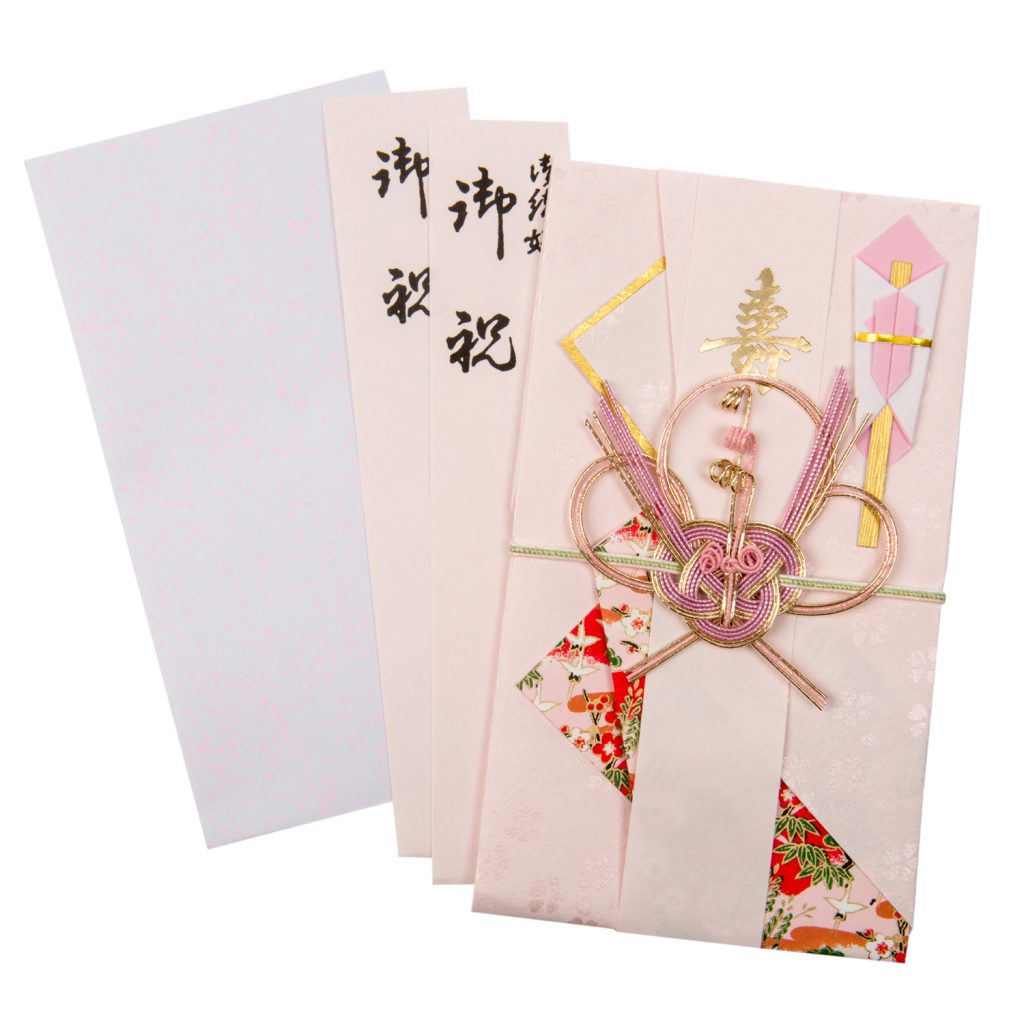
Shugi-bukuro is an envelope that contains a cash gift from the guests to the bride and groom
7. Take The Stage
During the wedding reception, the couple sits on a stage. The guests often give speeches and perform several songs for the couple. After cutting their wedding cake, the couple often greets their guests and lighting candles.
8. Reception Dinner
The Japanese wedding traditions also feature a colourful sushi display, as well as seabream, prawns and red rice. During the reception, there is a ceremonial sake opening, where the lid of a sake barrel is broken open and then sake is served to all of the guests. This is called kagami-biraki.
9. Favours
Favours or bomboniere in Japan are called hikidemono or a wedding souvenir that the newlyweds give to their guests. The favours are usually small and elegant gifts. Common wedding favours include sweets, sake cups, and tablewares. In recent times, a trend has emerged where guests can choose gifts from a catalogue. Japanese couples usually spend $40-90 on bomboniere for their guests.
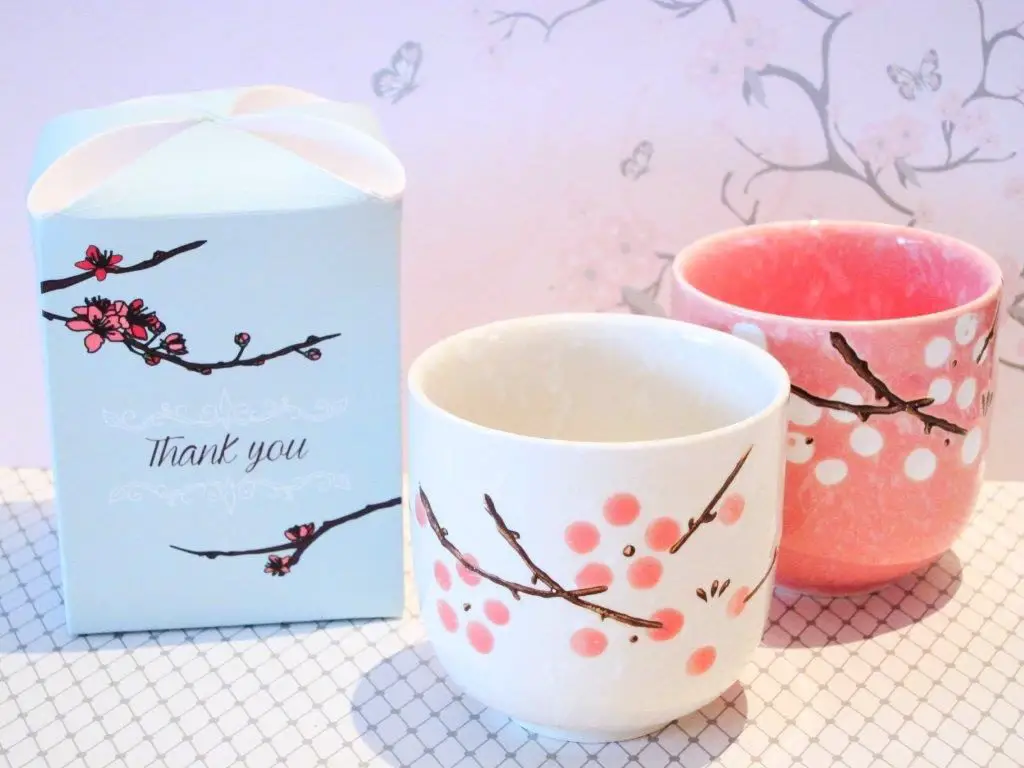
Guests attending the wedding also receive small and elegant gifts from the couple
10. Gifts For Parents
The bride and groom take time during their special day to honor their parents. Gifts include flower bouquets, cards, and letters.
Marriage In Japan Today
Today, the West has had great influences on the vast majority of Japanese weddings although traces of their Shinto heritage remain. This break from tradition is thought to stem partly from the fact that western weddings are cheaper than Shinto ceremonies, and partly from the popular perception of western culture as being modern, exotic and stylish.
Though the marriage rate in Japan is declining, the amount of care and money that the Japanese put into weddings remains consistent, reflecting the culture’s ongoing emphasis on marriage as a social good. Shinto wedding, the style of marriage in Japan may change, but its importance to the Japanese does not. Overall, what the future holds for Japanese wedding traditions remains to be seen.
Conclusion
Hopefully, after reading this blog you have known more about unique Japanese wedding traditions. Despite somehow being affected by Western culture, weddings in Japan still maintain some of their traditions and rituals. If you have already known any of the traditions mentioned above, feel free to comment and share your opinions about them!

